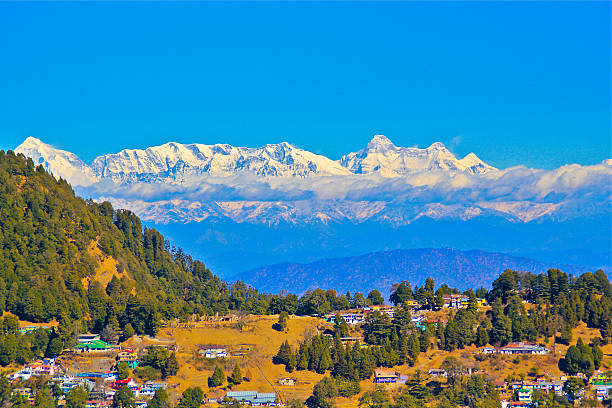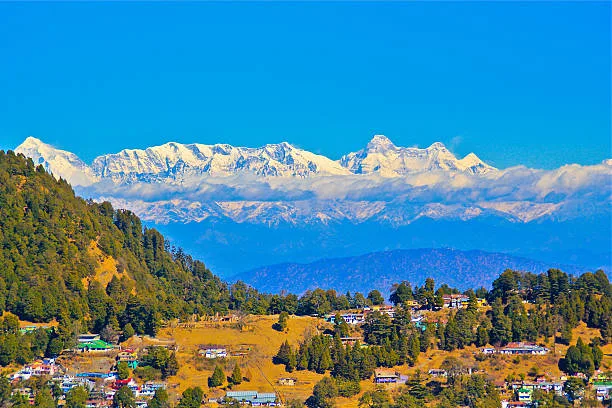Thursday, July 17, 2025

Uttarakhand is considering reopening Nanda Devi, India’s second-highest peak, after a 40-year ban to revive adventure tourism and respond to growing interest from climbers. The decision follows new discussions with the Indian Mountaineering Foundation and reflects efforts to balance ecological protection with sustainable tourism development.
Uttarakhand Considers Reopening Nanda Devi for Mountaineering After 40-Year Hiatus Amid Renewed Interest
The state of Uttarakhand is exploring the possibility of reopening the iconic Nanda Devi peak to climbers, four decades after it was sealed off to the public. The move comes in the wake of recent consultations between state tourism authorities and the Indian Mountaineering Foundation (IMF).
Nanda Devi, India’s second-highest peak, has remained off-limits since 1983, primarily due to environmental preservation concerns and the aftermath of a Cold War-era nuclear surveillance mission gone awry. Now, with growing interest from the mountaineering community and a formal proposal submitted by the IMF, officials are reviewing the viability of lifting the long-standing ban.
The proposal is currently under careful evaluation, balancing ecological safeguards with potential tourism and sporting benefits. If approved, it could mark a historic return for one of the most revered summits in the Himalayas.
Uttarakhand May Reopen Nanda Devi Peak for Climbers After Over 40 Years of Closure
More than four decades after it was shut to climbers, Nanda Devi—India’s second-highest mountain at 7,816 meters—is once again being considered for mountaineering access. The peak, located in Uttarakhand, has remained off-limits since 1983 following ecological concerns and the fallout of a Cold War-era nuclear reconnaissance mission.
This week, a significant meeting took place in Dehradun, where tourism officials and representatives from the Indian Mountaineering Foundation (IMF) reviewed a proposal to reopen the iconic Himalayan summit for expeditions. The discussion marks a potential turning point in the region’s adventure tourism landscape, with the final decision expected to balance environmental protection and global mountaineering interest.
The discussion also explored the potential of granting mountaineering access to four other Himalayan peaks—Baljuri (5,922 meters), Laspadhura (5,913 meters), and Bhanolti (5,645 meters) in Bageshwar district, along with Rudragaira (5,819 meters) in the Uttarkashi region.
In a parallel proposal, authorities recommended extending tourism operations in Gangotri National Park to include the October-to-March winter window. The goal is to promote snow leopard-focused wildlife tourism during the colder months, drawing inspiration from Ladakh’s successful Hemis National Park model.
A formal request has been submitted to the Uttarakhand government urging the reopening of Nanda Devi for mountaineering activities, as part of a broader initiative to revitalize adventure tourism in the region. Located in the Chamoli district within the Garhwal Himalayas, Nanda Devi has been off-limits to climbers since 1983, primarily to safeguard its delicate ecological balance. However, speculation persists that the closure was also linked to a covert Cold War-era surveillance mission that has remained shrouded in mystery.
In 1965, a classified operation jointly undertaken by U.S. and Indian intelligence agencies sought to install a nuclear-powered monitoring device near Nanda Devi’s summit to track missile developments in neighboring China. The device, which was powered by roughly five kilograms of plutonium-238, was abandoned during a severe snowstorm. Recovery attempts the following year were unsuccessful, and the equipment remains buried in the glacier. Although no official environmental damage has been reported, environmentalists have expressed long-standing concerns about potential radioactive contamination affecting the glacial rivers originating from the mountain.
Over the years, multiple efforts have been made to reopen the mountain, but none have materialized. In 2001, the central government offered tentative approval for a pilot eco-tourism project within the Nanda Devi inner sanctuary. However, this initiative was abandoned following objections from conservation organizations and scientific institutions. A similar push in 2012 to allow restricted climbing expeditions was also retracted after sustained pressure from environmental advocates, who argued that the area’s fragile terrain and rare biodiversity were too vulnerable to accommodate tourism.
Environmental stakeholders continue to voice strong opposition to any plan that would allow increased human access to the sanctuary. They emphasize that the ecosystem has only begun to regenerate in the decades following the closure, and reintroducing commercial activity could reverse hard-won environmental gains. Any new proposal to reopen Nanda Devi would require multiple layers of approval—including clearances from national environmental bodies, forest departments, and ecological review panels.
Nanda Devi’s last major ascent occurred in 1976, capping a brief but storied history of climbing achievements. Earlier notable expeditions include the pioneering British-American summit in 1936 and India’s second successful ascent in 1964. The region was declared a national park in 1982 and earned the status of a UNESCO World Heritage Site in 1988. It is home to over 1,000 plant species and rare high-altitude wildlife such as snow leopards, Himalayan musk deer, and blue sheep, spanning elevations from 1,800 to 7,817 meters.
Beyond its mountaineering and ecological importance, Nanda Devi also holds deep spiritual value. The Nanda Devi Raj Jat Yatra, a sacred pilgrimage that takes place once every 12 years, traverses meadows like Bedni Bugyal and attracts thousands of devotees. Covering a grueling 280 kilometers over 20 days on foot through rugged Himalayan terrain, the next edition of this revered journey is scheduled for next year.
As discussions continue, the challenge ahead lies in balancing ecological preservation with the desire to reconnect adventurers with one of India’s most iconic and enigmatic mountain peaks.







